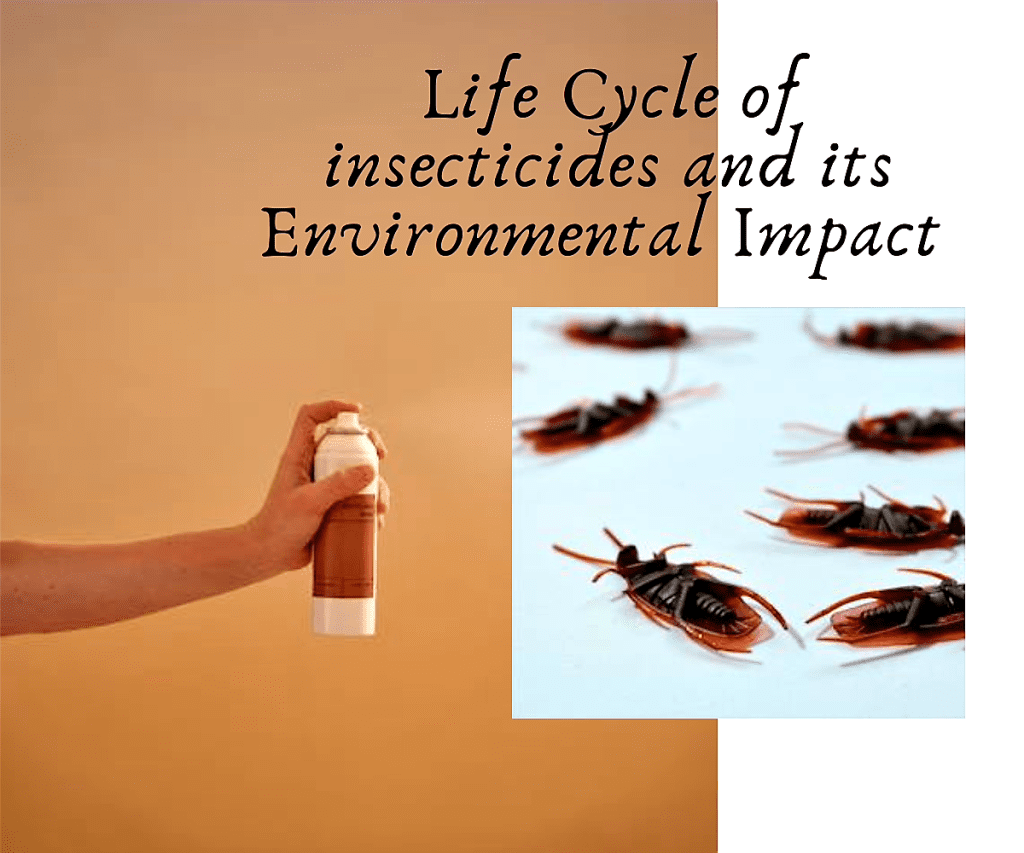In this article, we will be analyzing the Life cycle of Insecticides and its Environmental Impact, as well as possible measures to help mitigate these effects.
It is envisioned by scientists that the population of the world may reach 10 billion in the next fee decades (precisely 2050).
With this forecast of an increasing world population, comes an indirect yet tremendous amount of pressure on the existing agricultural system to effectively produce more food through the same current resources such as land, water etc.
This quest has driven, a rigorous process of increasing crop production, as well as the huge utility and application of fertilizers, insecticides, herbicides, fungicides, nematicides, and soil amendments in higher quantities than it was in the past.
Insecticides have now all the more become an integral part of our modern life and have been used to protect agricultural land, as well as stored grains, flower gardens etc.
All in a mission to eradicate the pests transmitting dangerous infectious diseases to these crops.
However, insecticide usage hasn’t just been applied on agricultural systems and produce but also in our homes to kill insects such as mosquitoes, flies, cockroach, ants, bedbugs etc.
Which contributes a quota to both human and environmental issues. Which is why in this article, we will critically examine the life Cycle of insecticides and its environmental impacts.
What are Insecticides?
Insecticides are chemicals that are designed to control insects through application (such as: spraying, etc) which in turn kills them or prevents them from engaging in undesirable or destructive behaviors.

Insecticides are usually classified based on their structure mode of action, and chemical nature. Typically into four groups:
- Organic insecticides.
- Synthetic insecticides.
- Inorganic insecticides.
- Miscellaneous compounds.
Life Cycle Assessment of Insecticides
This will consider insecticides through components such as: goal definition, and impact assessment.
Insesticide lifecycle assessment refers to the regulatory and technical control of the aspects of the pesticide lifecycle, that include: its production (manufacturing and formulation), packaging, labelling, registration, legislation and regulation, distribution, marketing, transport, storage, handling, application, disposal etc
Life-cycle assessment enables a more holistic evaluation by additionally assessing the impacts of insecticide production and application (e.g. tractor operations).
Environmental assessments in pesticide product development are basically restricted to plant uptake and emissions of active ingredients.
Also Read: Life cycle of detergent and-its environmental impact
Environmental Impact of Insecticides
Ideally, when we apply insecticides or pesticides they should only be toxic to the target organisms, and should be biodegradable and eco-friendly to some extent (Rosell et al., 2008).
However, this is barely the case – as most of insecticides are non-specific (i.e are hardly produced to eliminate target organisms) and also get to kill harmless organisms that may be useful to our ecosystem.
The effect of pesticides on non-target organisms has become a worldwide concern for decades. Also, their effect on the environment cannot be overlooked.
Pesticides over the years have contaminated arable soil, water, turf, and other vegetation.
They can also be toxic to a host of other organisms away from target insects such as: birds, fish, and non-target plants.
In the environment, insesticides when sprayed around our homes is associated to air pollution, and maybe toxic to inhale by humans.
When insecticides are suspended in the air as particles, drifts happen, they are transported by wind to other areas, potentially contaminating them.
Pesticides that are applied to crops, diffuses and may be blown by wind into nearby areas, posing a potential threat to wildlife.
Furthermore, the weather conditions at the time of application as well as temperature and relative humidity may alter the spread of pesticides in the air.
As wind velocity increases, the spray drift and exposure also increases. The amount of inhalable pesticides in the outdoor environment is mostimes dependent on the season.
Also, particles from pesticides applied as dusts may travel on the wind to other areas and continues to be toxic.
Insecticides are toxic to land, agricultural soils, when applied to tackle insects or crop eating pests. They are potentially dangerous to the soil by increasing acidity levels and at storage facilities, they also may threaten the natural compounds of farm produce.
Impacts of Insecticides on Human
Insecticides are also quite dangerous to humans. Many of which contain toxins that be poisonous, when inhaled, swallowed, or in contact with the skin.
Some symptoms on human may include: eye tearing, breathing fluctuations, coughing, heart problems, skin rash or burns.
In extreme cases, insecticides may contribute to cancers etc.
Insecticides Management Strategies
There are only a number of pesticide resistance management tactics that have been proposed as risk-free and have a degree of success under a variety of varying circumstances.
Some of these are:
- To monitor pest population in field before any pesticide or insecticide applications are done.
- Producing specific target intended insecticides other than an all rounder
- To alter pesticides with different modes of action
- Restricting the number of applications over time and space
- Creation or exploitation of refugia and avoiding unnecessary persistence,
- By targeting pesticide applications during the most vulnerable stages of pest life cycle.
Conclusion
The life cycle of insecticides and its environmental impacts is more ideally suited and profitable when more and more people are aware of the dangers that is associated with the application of these insecticides and pesticides and how best to be used for optimum benefit.
